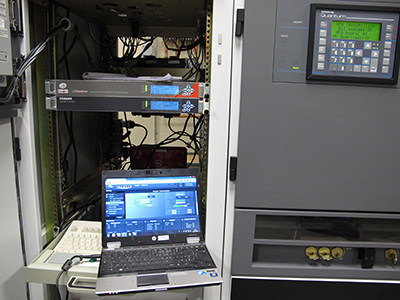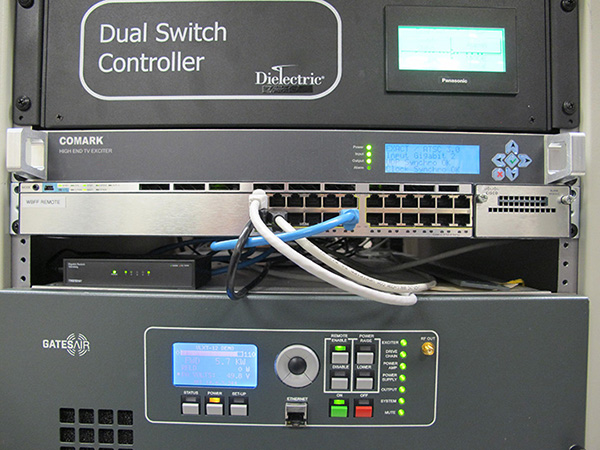ONE Media Conducts ATSC 3.0 ‘Concept’ SFN Trials

Personnel from Teamcast, Acrodyne and LG during the field-testing.
BALTIMORE—The ONE Media team reports field-testing ATSC 3.0 “concepts” over single frequency networks on the East Coast. The testing is taking place under a Special Temporary Authority license covering Baltimore and Washington, D.C., granted by the Federal Communications Commission.
ONE Media said it and TeamCast “jointly developed, built and deployed the experimental SFN to demonstrate a higher quality of service to a broadcaster’s community of license.”
The benefit of a single frequency network, or SFN, comes into play when there are gaps in a coverage area due to terrain or building profiles. An SFN is a type of distributed transmission system that uses more, but smaller, transmitters than a traditional big-stick TV broadcast operation.
“An SFN transmitter can utilize the same frequency as the big stick and improve coverage. Unlike a translator/LPTV-repeater, the SFN is designed to work on the same channel with a slight—unnoticeable—offset that lets you ‘tune’ to the same channel as the main, original [channel],” an industry source said.

The Baltimore site. The first deployment of an SFN operation for television transmission was in 2003, at Penn State’s public station, WPSU-TV, broadcasting on Ch. 3 in State College, Penn. The State College SFN was designed and installed by S. Merrill Weiss, who holds a key SFN patent and was also consulted on an SFN project with the Manhattan Television Alliance in 2007. (See “ION Pursues NYC Signal Alternative.”) WMBC-TV in West Caldwell, N.J., deployed an SFN in 2011 using Thomson transmitters.
According to ONE Media, its SFN “validates, in a real-world environment, the operation and performance of new and innovative concepts relative to an ATSC 3.0 SFN deployment, such as deploying a full range of next-generation services including fixed, portable and mobile capabilities.”
ONE Media, a joint venture of Sinclair Broadcast Group and Coherent Logix, said the field trial SFN represented “the first of hundreds of SFNs Sinclair Broadcast Group and other broadcasters will roll out in adoption of the next-gen technology.”
The field-tested SFN consisted of two transmitters—one in Washington, D.C. and one in Baltimore—both transmitting on Ch. 43. Each used the latest TeamCast ATSC 3.0 exciter, integrated for U.S. applications by Comark. Sinclair provided the transmitter in Baltimore, an Acrodyne 60 kW IOT. The D.C. transmitter, a GatesAir solid-state Maxiva ULXT-12, was provided by the vendor. Dielectric provided filters, feed lines and antennas. American Tower Corp. provided the Washington, D.C. transmitter site. Signal Above LLC provided access to Channel 43 in D.C.; and LG Electronics provided the ATSC 3.0 receivers.

Dielectric and GatesAir gear in the D.C. facility.
ONE Media said these specific coverage field tests would be used to “support the finalization of the ATSC 3.0 Studio Transmitter Link document, defining the stream interface regimens to feed ATSC 3.0 SFN transmitters.”
The testing was done under ONE Media’s direction and Acrodyne Services project management. It was “designed to illustrate future opportunities such as addressing services and content to zones, i.e., geographically smaller areas of service; for verifying SFN timing and distribution methodology for standardization; impacting of SFN deployment on over-the-air services to mobile, portable and indoor reception environments; and confirming various modeling techniques,” ONE Media said.
Get the TV Tech Newsletter
The professional video industry's #1 source for news, trends and product and tech information. Sign up below.
